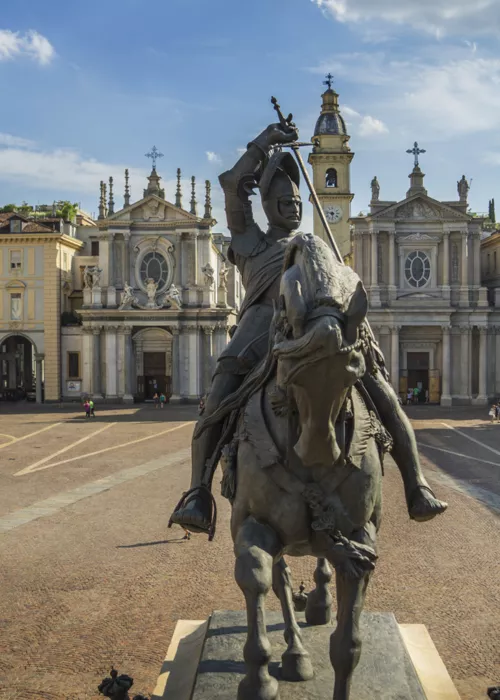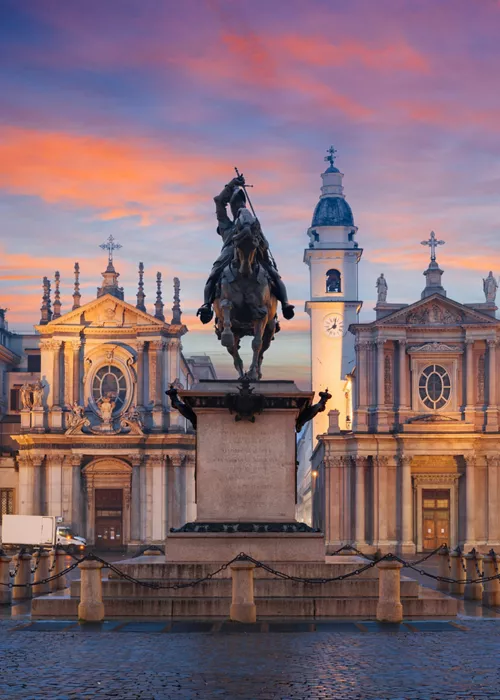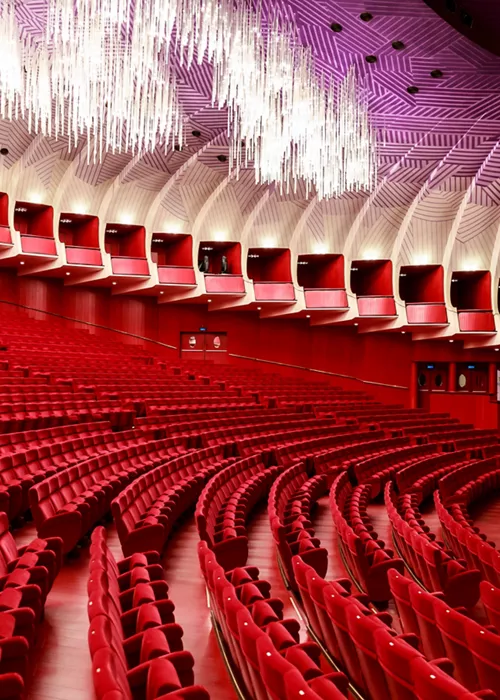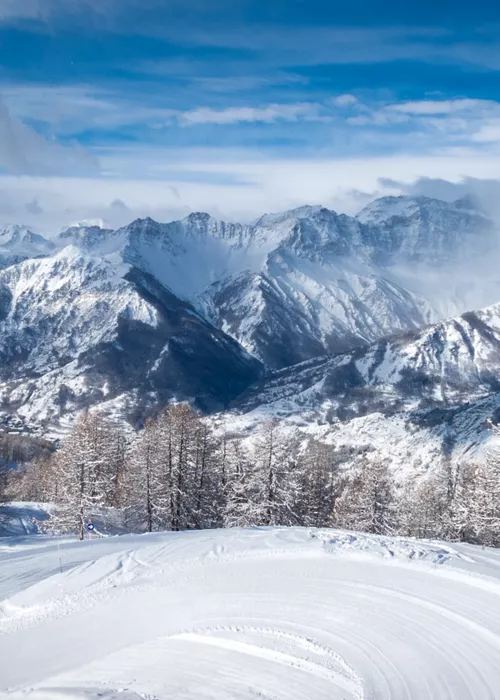Dreamy villages to visit in the hills of Monferrato
7 minutes

Monferrato is an area of the region of Piedmont in northwestern Italy characterised by gentle, rolling hills and plains, blanketed by a rich patchwork of vineyards, hazel groves, orchards and forests. Churches and bell towers crown the villages that elegantly grace the hilltops. It is an area of great beauty that’s recognised by UNESCO, which declared the landscapes of Monferrato a World Heritage site in 2014. The area is divided in two geographically distinct territories: Basso Monferrato (Lower Monferrato) and Alto Monferrato (Upper Monferrato).
As I explored its friendly hills, I discovered an area of enchanting landscapes, rustic villages, and warm, welcoming people. The food and wines they produce are a tangible testament to the passion for their craft, of which they’re proud and happy to share. I spent a few unforgettable days traversing Basso Monferrato, exploring its charming villages and indulging myself with its glorious cuisine.
Cella Monte
- Wander around the medieval village
- Visit a winery and its Infernot
- Visit the Pietra Cantoni Ecomuseum
- Have a meal at an agriturismo
- Indulge in local specialties like agnolotti
The first village I visited in Monferrato was Cella Monte. Listed as a ‘Borghi piu belli d’Italia’ (Italy’s most beautiful villages), this medieval village is as rustic as they come, with cobbled streets, ancient manor houses and palaces, hidden courtyards and quiet lanes. The parish church and 17th century San Quirico church, with their alluring interiors and frescoes, are both worth a visit.

As I wandered its picturesque lanes, I noticed the curious mix of stone, bricks and mortar used in the walls. In some parts of the stone, I even spotted the remnants of seashells! I later learned about pietra da cantoni, a type of sandstone/sedimentary rock that can be found throughout the Monferrato area. In Cella Monte, the Ecomuseo della Pietra da Cantoni provides insights to the origins of this stone and how it’s been utilised over the centuries. In this area, cellars, storage rooms and tunnels called infernot were dug from the soft sandstone. These infernot can still be seen in many villages and wineries. During my stay in the Monferrato area, I visited several infernot, including the ones at the Ecomuseum.

In the historic centre of Cella Monte, I discovered a beautiful winery called Cinque Quinti, located just up the road from the Ecomuseum in an ancient-looking manor house. Curious about this place, I knocked on the door and was welcomed by the owner. I didn’t have a booking but it just so happened that his wife was giving a tour to a couple from Turin, and she invited me to join them. It turned out to be a fascinating tour through their amazing infernot, followed by a wine-tasting with snacks in the gorgeous courtyard. If you’d like to visit this winery, I do recommend making a reservation in advance.

My most memorable encounter with the absolutely wonderful people of Monferrato was in Cella Monte, specifically at the nearby Agriturismo La Fontanella. I showed up for lunch on a Sunday without a reservation, and despite being full, the kind owners offered me a table on the terrace. What followed was a four-course culinary experience I will not easily forget! The family spoiled me with simply outstanding food and wine from their estate, all served with big, happy smiles. The agnolotti and vitello tonnato, typical Piedmontese specialties, were some of the best I’ve ever had!
Ozzano Monferrato
Top 5 things not to miss in Ozzano Monferrato
- Explore the medieval village and the castle park
- Enjoy the view from the balconies
- Tour a historic winery such as Cantine Valpane
- Visit the nearby Sacro Monte di Crea (UNESCO World Heritage site)
- Visit the nearby village of Treville
Ozzano Monferrato is an irresistibly charming medieval village crowned by a beautiful church and an impressive castle. It was in Ozzano Monferrato where I first heard about the ‘balconies’ of the Monferrato villages. Situated on hilltops, many of the villages have ‘balconies’ or panoramic viewpoints. As I clambered around the cobbled slopes of Ozzano Monferrato to the castle on the hill, I found a gorgeous viewpoint right in front of the parish church of St. Salvador. The view of the verdant slopes and wave-like horizon was absolutely breathtaking. During my stay, I discovered several other ‘balconies’ with amazing vistas of the Monferrato landscapes.

There are several points of historic and artistic interest that are well worth a visit, such as the parish church of St. Salvatore and the adjacent bell-tower, and the church of Santa Maria Assunta. The castle atop the hill has its origins in the 12th century but the structures that can be seen today were built in the 16th and 17th centuries. It’s a private property though, owned by the Visconti family. The castle grounds also include a big park, which is open to the public. The park is a lovely place for a stroll and features impressive, centuries-old Lebanese cedars.
Near Ozzano Monferrato, I visited several wineries such as the Angelini Paolo winery but my favourite experience was at Cantine Valpane. This beautiful winery, housed in a historic manor, overlooks the gradually sloping vineyards. I was welcomed by the wine-maker himself, Pietro, and his brother-in-law, Roberto, who gave me a wonderful tour of the winery, followed by a wine-tasting.

The local variety, Grignolino del Monferrato Casalese, was absolutely sublime! As I swirled the wine in the glass, I found its colour, a translucent crimson, like liquid rubies, simply mesmerising. The Barbera del Monferrato was just as extraordinary, with a fragrant bouquet and exuberant notes of red fruits.

About a 15-minute drive from Ozzano Monferrato lies the majestic Sacro Monte di Crea (Sacred Mountain of Crea), one of nine UNESCO World Heritage listed sacred mounts in Piedmont and Lombardy. Atop the low mountain, surrounded by a forest reserve, stands a Catholic sanctuary composed of a church and numerous chapels. For lovers of religious art, this sanctuary, with its amazing frescoes and statues, is a must-see. In addition, you’ll get plenty of exercise hiking to the highest chapel: the ‘Paradise Chapel’! You’ll be rewarded with stunning panoramic views and absolutely magnificent depictions of Biblical scenes. The chapels are fenced (often with mesh wire) and unlit so unless you’re with a guide who has keys to open the doors, I recommend using the camera of your phone to view the frescoes from outside the meshed windows.

I first noticed Treville on my way back to Ozzano Monferrato one evening. The sun was setting and the warm, orangey glow cast onto the hills was absolutely magical. I stopped to enjoy the view when I noticed a pompous-looking structure atop a hill. It stood as a solitary figure, like a beacon overlooking the area. The next day, I made it a point to visit Treville. Just a 5-minute drive from Ozzano Monferrato, I found a lovely village topped by the imposing Sant’Ambrogio church. Here, I also found another ‘balcony’ with stunning views. It is said that on clear days, the entire range of the Italian Alps can be seen from this balcony.

After taking in the views, I visited the village’s infernot, which is open to the public. I also discovered a beautiful 1-hour walking route that starts at the church and continues down to the valley floor, passing fields, vineyards and various historic monuments such as the 12th century San Quirico church.
Rosignano Monferrato
Top 5 things not to miss in Rosignano Monferrato
- Explore the Capoluogo
- Visit the 12th century Sant’Antonio church
- Enjoy the beautiful views from the balconies
- See the rock that the Capoluogo sits on, including cave chapels and ancient quarries
- Hike to Cella Monte
Across the valley from Cella Monte lies the village of Rosignano Monferrato. The Capoluogo or ‘Chief Village’ atop the hill begs to be explored. It’s not immediately clear at first sight but the chief village was built atop a huge rock.

There are many points of historical interest such as the 12th century Romanesque Church of Sant’Antonio, the Town Hall with its infernot (open to the public), the 15th century San Vittore Church and the Mellana Castle. Rosignano also has several ‘balconies’ scattered around the village, where you can enjoy some pretty spectacular views. I followed the walking route I obtained from the tourist office and discovered a gorgeous village steeped in history.

As I walked down the hill along Viale della Repubblica, I noticed the rock that the Capoluogo sits on. The exposed rock surface is quite impressive, and I found a little cave chapel, Madonna sotto il Sasso as well as remnants of ancient quarries. For avid hikers, the trail continues further down to the valley floor and along the hilly surroundings to the next village, Cella Monte. This circular trail is 11 kilometers long and passes vineyards, orchards, fields and various historic sights.
Basso Monferrato: useful information
Best time to go: This area can be visited all year round. Summer is the busiest time of the year whilst spring and autumn are a more pleasant (and quieter) time to visit.
How to get there: This area is less than a 1.5 hour drive from Turin and Milan. Casale Monferrato is connected to both Turin and Milan by rail, with frequent daily services from both cities.
Article written about the experience of Keith Jenkins - Velvet Escape.
Author: Keith Jenkins - Velvet Escape












